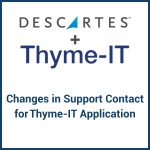IE507 and IE590 AES messages
IE507 (arrival at exit) and IE590 (exit notification) are new messages introduced with the new Automated Export System (AES). When it comes to exporting goods from Ireland, knowing when to lodge the IE507 and IE590 messages is essential. In this article, we explore some of the common scenarios in which these messages should or should not be submitted.
IE507 / IE590 and Direct x Indirect export declarations
Firstly, it is important to note that the IE507 and IE590 should only be lodged in AES if the Office of Exit is Irish.This means that the submission of an IE507 and IE590 is mandatory if goods are moving under a single transport contract with Ireland as the Office of Exit from the EU.
However, if Ireland is not the Office of Exit, there is no need to lodge an IE507 or IE590 in AES.
RoRo movements
In situations where goods are leaving Ireland by road to Great Britain, a Pre-Boarding Notification (PBN) must be created. The PBN should include all export MRNs associated with the goods on board the truck or trailer. Once the PBN is in place, the truck can proceed to check-in on the ferry. In such cases, businesses do not need to complete an IE507 or IE590, as the information from the PBN and ferry operators is sufficient for Revenue to fulfill the arrival and exit requirements. Only in cases where discrepancies are discovered would an IE507 be required.
Air/ LoLo movements
In situations where the Export Release Verification System (ERVS) is being used to complete the IE507 and IE590:
- The IE507 message should be lodged by the trader at exit (haulier, carrier, declarant, exporter, customs agent etc). All parties in the export supply chain must be aware of the obligation to lodge the IE507 message and discuss and decide who will lodge this message.
- For air movements, the IE507 will be lodged by the air handler.
- The IE590 message must be lodged by the carrier.
The ERVS can only be used if there are no discrepancies. However, if there are actual discrepancies in the declaration, the IE507 must be lodged in AES. Again, this only applies if Ireland is the office of Exit.
You can read more information about the ERVS here.
Understanding the circumstances under which an IE507 and IE590 should be lodged in AES is essential to avoid delays in the clearance process. If you need assistance with the new Irish Automated Export System (AES), we are here to help!
Support is available on +353 1 2060010 or via email at support@thyme-it.com.




